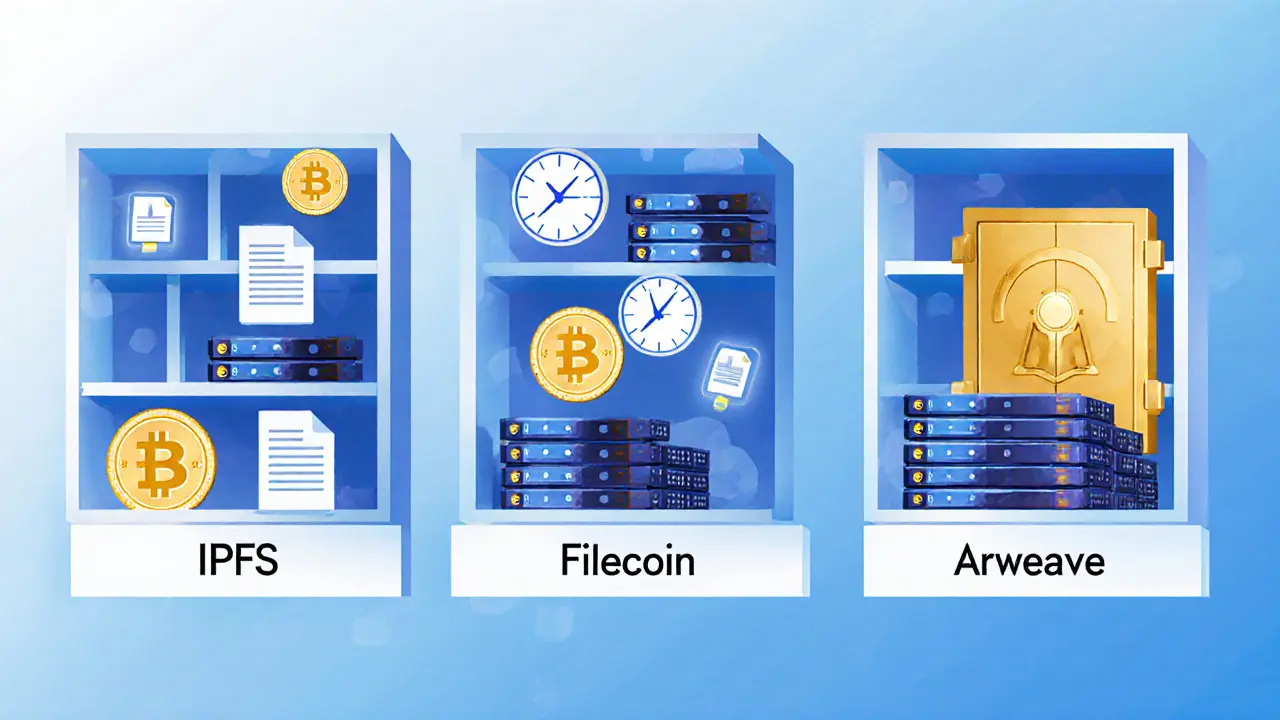IPFS: What It Is, How It Works, and Why It Matters for Crypto and Decentralized Web
When you upload a file to IPFS, a decentralized protocol that stores and shares files using content-based addressing instead of location-based URLs. Also known as InterPlanetary File System, it doesn’t rely on servers you can shut down—it finds files by what they are, not where they’re stored. That’s why projects like NFT marketplaces, crypto wallets, and even decentralized social media use IPFS. If a file’s hash hasn’t changed, it’s the same file anywhere in the world—even if the original site disappears.
IPFS works differently than regular websites. Instead of typing in a URL like example.com/image.jpg, you use a unique string of letters and numbers called a CID (Content Identifier). That CID is generated from the file’s actual content. Change one pixel in the image? You get a new CID. This makes tampering impossible and ensures you always get the exact version someone shared. It’s not just storage—it’s trustless verification. And while IPFS itself doesn’t pay you to host files, Filecoin, a blockchain-based incentive layer built on top of IPFS that rewards users for storing data, turns storage into a market. People earn FIL tokens by keeping files alive, which keeps the network running without centralized companies.
Many of the crypto projects you’ve heard about—like NFTs on OpenSea, decentralized apps on Ethereum, or even blockchain games—rely on IPFS to store images, metadata, and smart contract code. If those files were stored on a regular server, the whole thing could vanish overnight. But with IPFS, as long as someone is pinning the file, it stays up. That’s why scams often fake NFTs by linking to broken HTTP links—real ones use IPFS hashes you can verify yourself. And because IPFS is open-source and decentralized, no single company controls it. Governments can’t take it down. Corporations can’t censor it. It’s the closest thing we have to a permanent, global hard drive.
You don’t need to be a developer to use IPFS. Wallets like MetaMask automatically pull NFT metadata from IPFS. Airdrop sites use it to store claim files. Even crypto news sites like this one store articles on IPFS so they can’t be deleted. But it’s not perfect. Files can disappear if no one’s pinning them. Speed can be slow if there aren’t many peers sharing. And while content addressing, the method IPFS uses to locate files by their hash rather than their location solves censorship, it also means you can’t easily update a file—you have to create a new one with a new CID.
What you’ll find in the posts below isn’t just theory. It’s real cases: how IPFS is used (and misused) in crypto airdrops, why some projects fail because they didn’t pin their files, and how blockchain games cut costs by storing assets on IPFS instead of Ethereum. You’ll see how scams hide behind fake IPFS links, how developers choose between IPFS and centralized storage, and why some blockchains now build IPFS into their core design. This isn’t a tech manual—it’s a practical guide to what IPFS actually does in the wild, and why you should care whether your NFTs are stored on it or not.
IPFS vs Arweave vs Filecoin: Which Decentralized Storage Solution Is Right for You?
Compare IPFS, Arweave, and Filecoin - three decentralized storage options with different models for cost, permanence, and reliability. Find out which one suits your needs for NFTs, data backups, or permanent archives.
learn moreHow NFT Metadata Links to Digital Assets
NFT metadata connects your token to the digital asset it represents - but that link is often fragile. Learn how IPFS, centralized servers, and on-chain storage work, why most NFTs risk breaking, and how to protect your investment.
learn more
